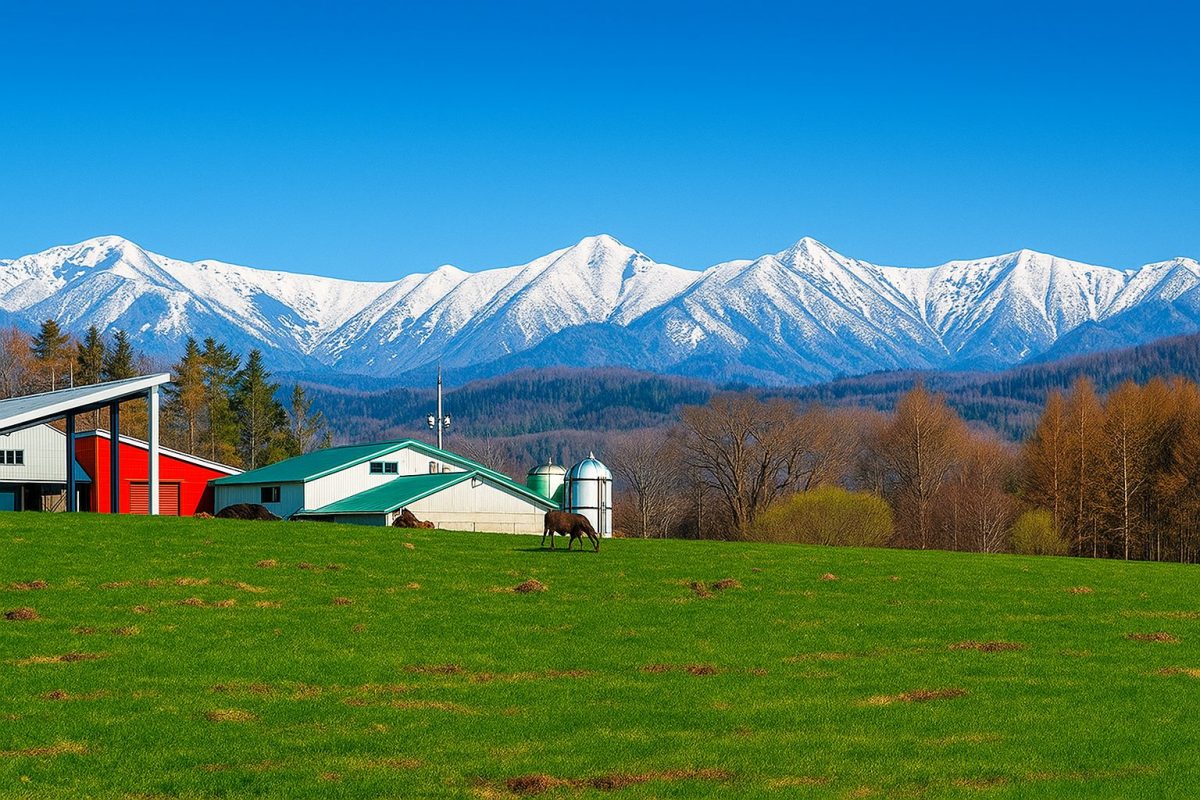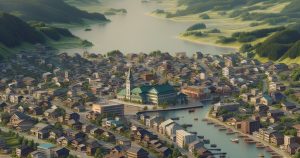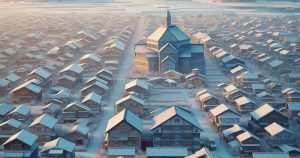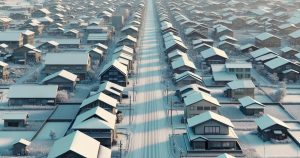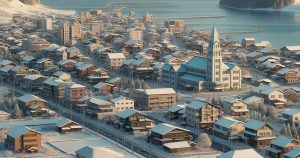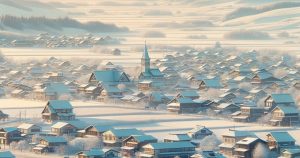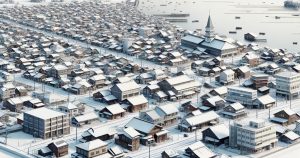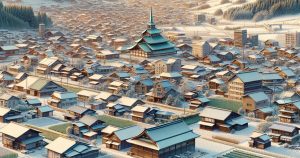| population | 938 peoples |
|---|---|
| area | 308.08 km² |
| population density | 3.04 peoples/km² |
Nishiokoppe Village, located in the inland area of the Okhotsk region in northern Hokkaido, is a tranquil community where approximately 90% of the land is covered by forests. The village harmoniously blends the legacy of Ainu culture with the pioneering history of the Meiji era, creating a distinctive cultural landscape. Dairy farming is the backbone of the local economy, producing high-quality milk and butter known throughout Hokkaido. The residents of Nishiokoppe live in close harmony with nature, embracing a lifestyle that values cooperation and community spirit. The village is also famous for its warm, unified appearance—most buildings are painted in orange tones as part of its “Beautiful Village Ordinance,” symbolizing warmth and vitality amid the green forests of summer and the white snows of winter. The local mascot “Setoushi-kun” represents the friendly character of this peaceful village.
Cultural Traditions
Nishiokoppe Village preserves the cultural influences of the Ainu people while also reflecting the pioneering spirit of the Meiji period. The residents cherish a life surrounded by forests and rivers, earning Nishiokoppe the nickname “The Forest Village.” From 1987 to 2003, Mayor Yutaka Miyake promoted a unique townscape policy that unified the entire village with orange-colored buildings to convey a sense of warmth and energy. Today, this design philosophy has become a defining feature of Nishiokoppe’s identity. Cultural and educational facilities such as the Komu Museum of Art and the “IT Yume (Atom)” multimedia center foster creativity and lifelong learning. Community events like the “Mura Okoshi Festival” and the “Gyōja no Taki Festival” bring together villagers of all generations. These celebrations, held in both summer and winter, symbolize the resilience and unity of the people who thrive in Hokkaido’s harsh yet beautiful natural environment.
Local Specialties
- Dairy Products (Milk, Cheese, Butter) – Nishiokoppe’s fertile pastures and clean water produce rich, flavorful milk. Locally made butter and cheese are prized throughout the Okhotsk area for their exceptional quality and taste.
- Matsutake Mushroom Shochu – Using wild matsutake mushrooms harvested from nearby forests, this locally branded spirit is brewed in collaboration with external distilleries. Its elegant aroma makes it a sought-after gift item.
- Venison Products – Since the establishment of the local deer ranch in 1990, Nishiokoppe has become known for high-quality venison. The meat is processed into sausages and gourmet dishes, valued as a healthy, low-fat protein source.
- Honey, Wild Vegetables, and Forest Mushrooms – The surrounding forests yield an abundance of natural foods such as bamboo shoots, mushrooms, and locally harvested honey, all popular among visitors seeking natural Hokkaido flavors.
- Woodcraft and Handcrafted Furniture – Skilled artisans produce finely crafted wooden furniture and art pieces using local timber, reflecting the village’s deep connection to its forests and the spirit of craftsmanship.
Annual Events
- Gyōja no Taki Festival (July 19) – Held at the Gyōja Waterfall, this traditional summer event includes purification rituals, local performances, and open-air food stalls, attracting residents and visitors alike.
- Mura Okoshi Festival (Late August) – The largest annual celebration in Nishiokoppe. It features live stage shows, fireworks, and local product sales, creating a festive atmosphere throughout the village.
- Snow Festival (February) – A highlight of winter in Nishiokoppe. Snow sculptures, snowmobile rides, and various winter sports events celebrate the village’s vibrant snow culture.
- Autumn Leaves Festival (Mid-October) – As the surrounding forests turn crimson and gold, visitors enjoy scenic walks and local delicacies around the Nishiokoppe Forest Park and Mount Uenshiri.
- Komu Art Festival (Summer) – Hosted at the Komu Museum of Art, this event showcases wooden art and design exhibitions, along with hands-on workshops for families and children.
Access
- By Air: The nearest airports are Monbetsu Airport (about 1 hour by car) and Asahikawa Airport (around 2.5 hours by car). Renting a car is recommended for exploring the surrounding nature.
- By Train: There are no railway lines within the village. The closest station is JR Nayoro Station on the Sōya Main Line. From there, take the Meishi Bus (Okoppe Line) toward Nishiokoppe.
- By Bus: The Meishi Bus Okoppe Line runs east–west along National Route 239, connecting Nayoro City, Nishiokoppe Village, and Okoppe Town. The village also operates community buses serving the surrounding hamlets.
- By Car: From Sapporo, it takes about 5–6 hours (approximately 270 km) via Routes 12 and 239. The drive offers scenic views of Hokkaido’s countryside. Winter travelers should watch for snow and icy conditions.
Tourist Attractions
- Komu Museum of Art – A wooden art gallery showcasing both local and international works. Visitors can experience the warmth of natural wood and creative craftsmanship.
- Roadside Station Nishiokoppe Hanayume – A popular rest stop offering local dairy products, handmade crafts, and a restaurant serving dishes made from village produce.
- Mount Uenshiri – Standing at 1,142 meters, this mountain offers panoramic views of the Okhotsk landscape and is a favorite for hiking and photography.
- Nishiokoppe Forest Park – A peaceful natural park with walking trails, campsites, and observation decks to enjoy the forest scenery in every season.
- Akaiwa Waterfall – A scenic 20-meter waterfall surrounded by lush green forest, ideal for a short nature hike or summer relaxation.
